One of my favorite things about this time of year is the abundance of warm colors—the trees are changing, goldenrods are abloom, and my marigolds continue to flourish. All of these things—leaves included, are wonderful resources if you’re interested in dyeing yarns naturally.
Over the next few weeks, I’m going to post some tutorials on naturally dyeing yarn, all using our Ready to Dye Collection. First, we’ll use marigolds to make a gorgeous golden dye. Then, we’ll dive into an especially exciting dye: umbilicaria lichen. Finally, we’ll work on a project that incorporates the colors of both yarns. I hope you enjoy this series!
For this collection, I’ve chosen our Superwash Merino Worsted Weight yarn. It’s plump, soft, and perfect for a satisfying quick knit. After dyeing your yarn, I promise you’ll want to knit it up immediately.
For today’s tutorial you’ll need:
- 1 skein of Universal Yarn Ready to Dye Superwash Merino Worsted Weight
- Approximately 100 g of marigolds
- Alum – you can find this in the baking/spices section of your grocery store.
- Two stainless-steel pots that you don’t plan to use for cooking – I purchased mine for a few dollars at a thrift store.
- Tongs – they don’t need to be stainless steel, but choose some that you won’t use for cooking.
- A kitchen scale – I can’t recommend this one enough. Although it isn’t essential, if you’re a knitter, you should have one! It’s useful for much more than dyeing.
- Measuring cups/tablespoon
- White distilled vinegar
- Salt
- Water
The first thing you’ll want to do is create your mordant. Mordant is what fixes the dye to the fiber.
- Dissolve 1 Tbsp of alum into ¼ cup of hot water.
- Fill a stainless-steel pot or bowl with enough water to cover your yarn so that it can move freely.
- Pour your mordant into the water.
- Add your yarn and soak for about an hour.
While your yarn is soaking, you can prepare the dyebath.
- Fill your stainless-steel pot with enough water to allow your yarn to flow freely.
- Dissolve 1 tbsp of salt into the water.
- Pour ½ cup of vinegar into the water – salt and vinegar help to brighten the dye.
- Add your marigolds and use the tongs to stir the pot.
- Bring to a simmer over your stovetop. Allow to simmer for about 30 minutes.
- Lower the temperature so that the water is just under a simmer. If you have a thermometer it should be about 190 degrees F. I’m a bit irresponsible, and I usually eyeball this part. I haven’t had any issues yet, but use a thermometer if you’re worried.
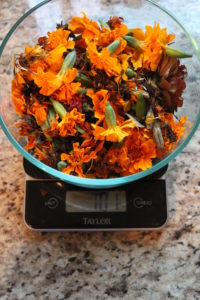
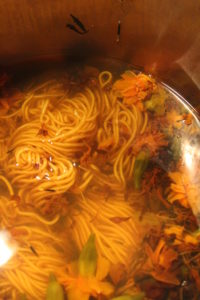
Remove your yarn from the mordant bath. Gently squeeze (do not wring) the excess mordant from the yarn (you can place the remaining mordant into a jar to save it for another dye project if you’d like). Carefully place your yarn into the dyebath.
Continue to soak the yarn in the dyebath over low heat (maintaining a temperature just under a simmer) for approximately an hour. Gently turn the yarn with your tongs occasionally. After an hour, remove the pot from the heat. Set aside to cool. I usually leave my yarn in the dyebath overnight.
Remove your yarn from the dyebath and thoroughly rinse. You can use a wool wash or gentle detergent if you wish. You’ll need to gently shake out bits of flowers and plant matter.
Hang and allow to dry completely.
Finally, admire your results!


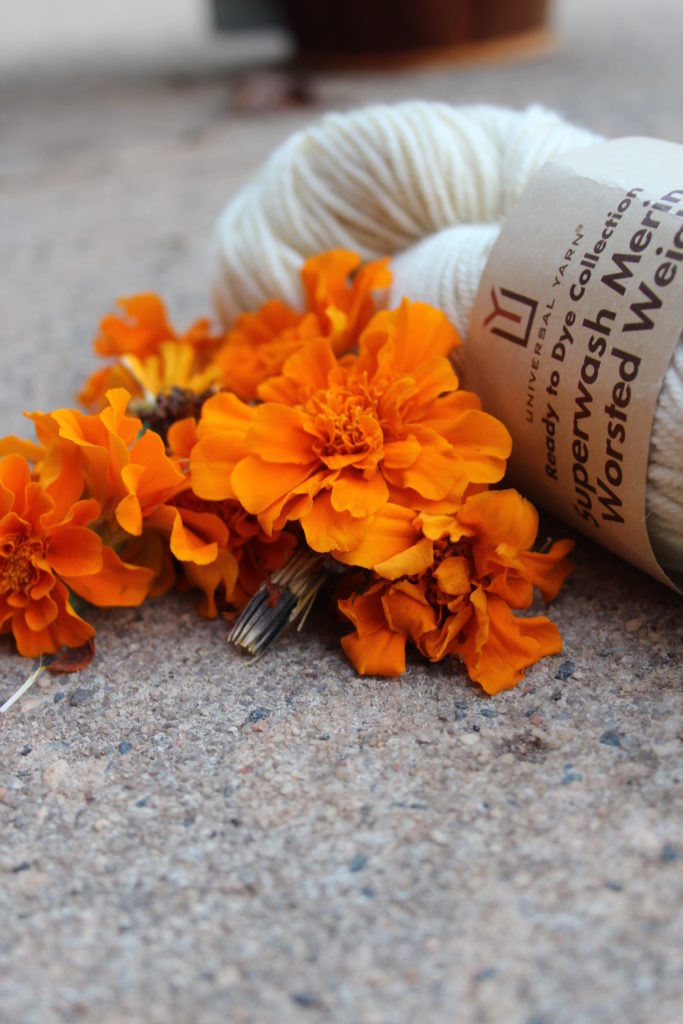
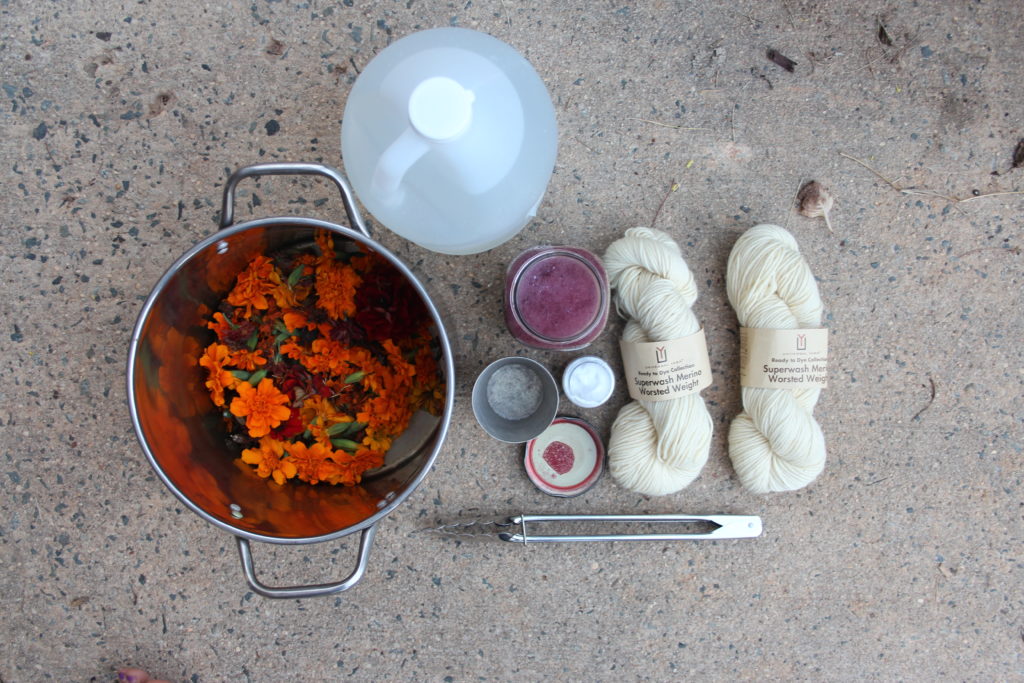
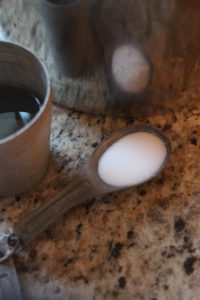
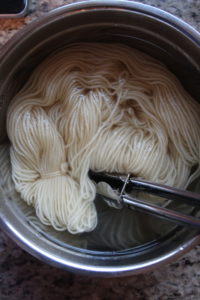
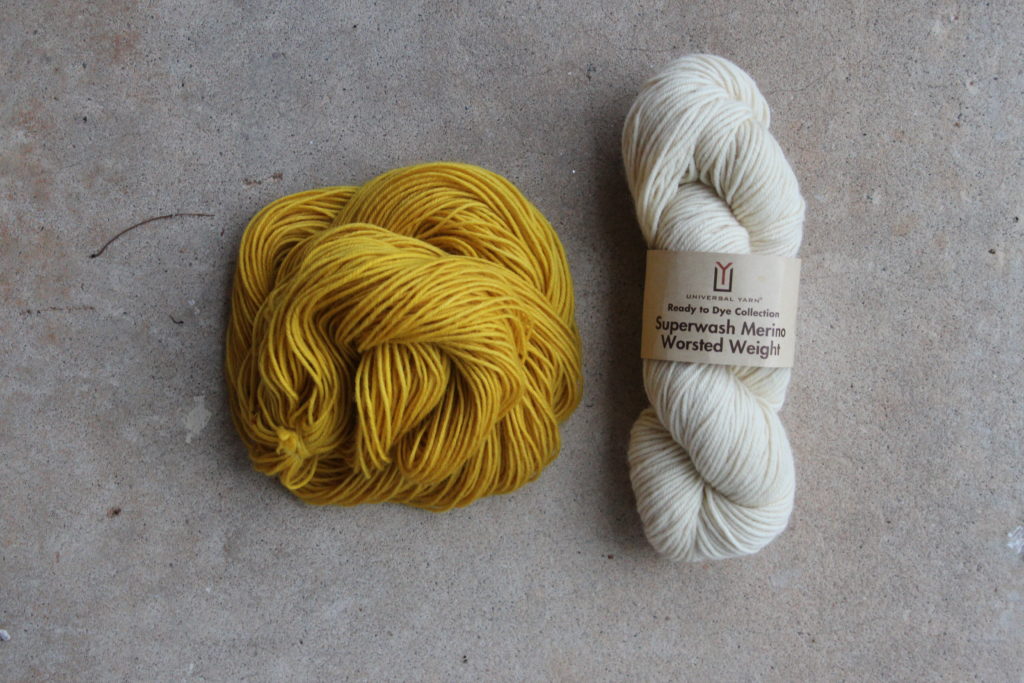
2 Replies to “Natural Dye Series: Part I”
Comments are closed.